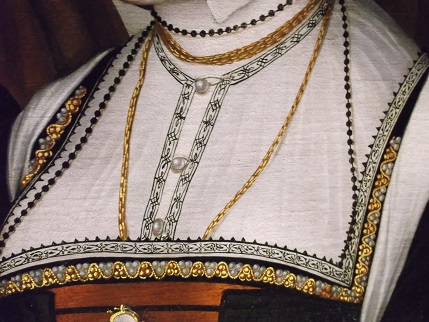Silk thread is historically accurate when doing a blackwork embroidery project. For my first blackwork embroidery project with silk thread, I used Gutermann's silk thread bought at Joann's (http://www.joann.com). Although it is 100% silk thread, it is thin. It depends on the type of project and the desired look. Gutermann's is smooth and tightly spun. It works well and the knots come out easily enough. If looking for a thick, shiny thread, then I suggest using Hedgehog Handwork's Soie Ovale (http://www.hedgehoghandworks.com/catalog/fibers_silk.php). The Soie Ovale is also 100% silk. However, it is untwisted and has a tendency to snag easily (which causes fraying). Pictured below are examples of both threads on white linen.
Embroidery with Gutermann's
Embroidery with Hedgehog Handworks'





















 (Same picture as above)
(Same picture as above)




